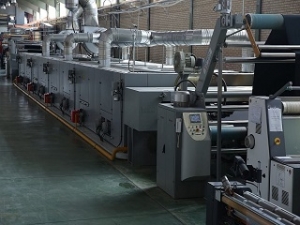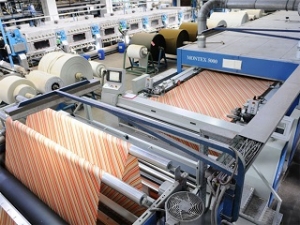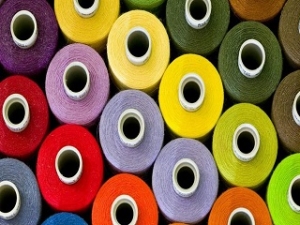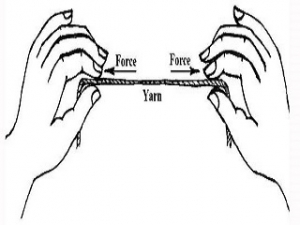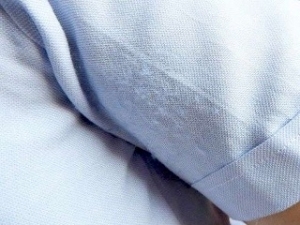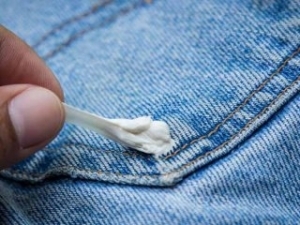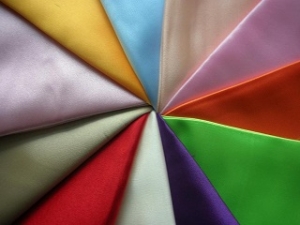
Denim fabric
In Iran, many people mistakenly know denim fabric as Lee fabric, and this is because this fabric has become famous in Iran under the Lee brand. Due to the beautiful and stylish denim fabric, this fabric is a favorite of all tastes so that it never goes out of fashion. Denim fabric has an uneven cotton texture, in the texture of this fabric two threads or more pass under. This fabric has a variety of paper, cotton, thick, elastic and non-elastic and has a very good strength and thickness. Also, denim, which is considered one of the fashion styles in the world today, is dyed using plants.
cotton fabric
As the name implies, linen fabric is made of flax stem fibers. Flax is an annual herbaceous plant and has a stem with soft and long fibers and matte green leaves, which of course are also obtained from flax yarn. Linen fabric, which is known as the king of fabrics, has the ability to absorb high and cool water, so that it can be said that clothes made of linen fabrics are very suitable for summer and spring seasons. Other features of linen fabric include its smooth and shiny surface, also because linen fabric is one of the fabrics that change size after washing, it is recommended before people apply Cut the fabric for sewing clothes and wash once. Also, this type of fabric has a long life and low weight and easily wrinkles.
Silk fabric
Silk fabric is one of the fabrics that are made of natural fibers. This type of fabric is made of silkworm cocoons and also because of the natural nature of this type of fabric, when they are burned, they smell like burnt hair. Silk fabric is obtained by boiling the inner cocoon of silkworm, but silk produced by boiling the cocoon has brittle silk threads. Silk fabric is also one of the fabrics that can be biodegradable. Silk fabric is one of the strongest fabrics in the world that has a soft and shiny surface. Due to the protein in the fibers of this fabric, the silk fabric does not pass heat and keeps it. Another point that we should mention about silk fabric is that this type of fabric is one of the luxurious and expensive fabrics and is used in sewing ties, scarves, coats, suits, home appliances and 2 pieces of fabric. Silk is used.
cotton fabric
In colloquial language, cotton fabric is called cotton fabric. Cotton fabric is a soft and comfortable fabric and can pass air. Cotton or cotton cloth, as its name implies, is made from a moist cotton plant. This plant needs a lot of water to grow, but because organic cotton does not pose a risk at any stage of its growth. It is the best choice for people and the environment. Also, in the case of cotton or cotton fabric, we must say that this type of fabric is the most widely used type of fabric, as it is used to produce more than 30 types of fabrics. Other characteristics of cotton fabric include softness, coolness, non-allergenicity and no bullets. Because cotton fabric can pass air through it, it can transfer body heat outside in hot seasons and cool a person. Cotton fabric has various colors, which according to the fibers used in its production, has three types: natural, synthetic and mixed.
Suede fabric
Suede fabric is also one of the fabrics that have a natural origin, this type of fabric is produced during a special process from the skins of sheep, calves, goats and deer, and during this process, its fleshy surface becomes creamy. There are irregularities on the surface of the suede fabric, which are known as leather because this type of fabric is a kind of thin leather. Other features of suede fabric include that it gets dirty quickly, so it is recommended that suede fabric be kept away from any dirt and grease. Also, suede fabric has a high resistance and air can not withstand it. It can penetrate slowly, so it can be used for sewing coats in cold seasons, which can double the beauty of coats because suede fabric has a state between leather and velvet.
Satin fabric
Polyester, silk, nylon, cotton and… are used to produce satin fabric. Satin fabric has various types, including satin fabrics such as jeweled, turquoise, glass, back, love and.. Satin fabric has a smooth and shiny surface, also due to its light weight, it needs high care and is used in sewing women’s clothes.
velvet fabric
Velvet fabric is considered as one of the luxury and expensive fabrics because its production process is hard and difficult. However, today, due to the advancement of technology and the use of advanced machinery for the production of velvet fabric, the cost of production of this fabric has decreased. Velvet fabric is a fluffy fabric woven from cotton, silk, wool or linen. Velvet fabric is used to produce bedspreads, clothes, curtains and
Lace and guipure fabric
Another type of fabric is lace and guipure. Cotton and guipure fabrics have no background and are produced from cotton and silk textures in a prominent and thick form. Lace fabric, which is one of the most expensive fabrics, is woven on a net and is made of silk threads. Among the other features of lace fabric, we can mention its beauty and elegance, so that this type of fabric is used for sewing wedding dresses. The lace fabric does not have a rough back from the fabric, and prominent designs on its nets Delicate and shiny work. Another point that we should mention about lace fabrics is that this type of fabric has three types of embossed, unworked and worked.
Viscose fabric
Raven or viscose fabric is one of the fabrics that are of natural origin and have a plant nature. Viscose fabrics are produced in the form of short lint fibers and long lint fibers, and the only difference between this type of fabric and fabrics such as cotton and linen is that the process of producing their fibers is different, and viscose fabric is like the process of producing paper from Cellulose kneading is obtained. Among the features of this type of fabric, we can mention its low strength, moisture absorption and coolness. Also, due to the cool properties of this type of fabric, it can be used to sew warm season clothes. Another thing to note about viscose fabric is that moisture can reduce the strength of this type of fabric, in other words, if viscose fabrics get wet, their life will be shortened. Also, in the production of viscose fabric, sometimes 50% of the fabric is used. It is interesting to know that viscose fabric is also known as “man-made” because, unlike fabrics such as nylon and polyester, which are completely synthetic and made from petroleum products, are produced by man himself.
Lame fabric
Today, Lameh fabric is one of the most popular fabrics among women and this issue is used in sewing parliamentary clothes due to its beauty. Lameh fabric is made of shiny yarns and colored fibers. Also, some people are afraid that they will be damaged when washing the fabric due to the serrated shape of the Lameh fabric, but there is no need to worry because only the wreaths when washing the Lameh fabric. The excess sheds and does not damage the fabric.
silk fabric
Made of natural fibers, this fabric is a type of thin silk that is similar to Fastoni, Wall and Lace fabrics. There are different types of silk fabric, which are: silk crepe, silk silk, curtain silk, satin silk and…
Hemp fabric
Hemp fabric is also one of the fabrics that is of natural origin and is produced from a plant called hemp. This type of plant has stems covered with thorns and bushes, this plant is extracted from the seeds of edible oil. Its main areas are different parts of Africa. Hemp fabrics made from hemp plant have a special type of texture and material. Hemp fabrics also have a special smell that you can wash the fabric and spread it in the sun to eliminate this odor, but note that the smell does not disappear completely. A feature that should be mentioned about hemp fabrics is that this type of fabric is used in art tools, dress design, and bridal decoration.
Crepe fabric
Crepe fabric has a thin lace shape that is produced from wool, polyester or silk. Crepe fabric is a good choice for sewing cold season clothes because it does not pass air.

